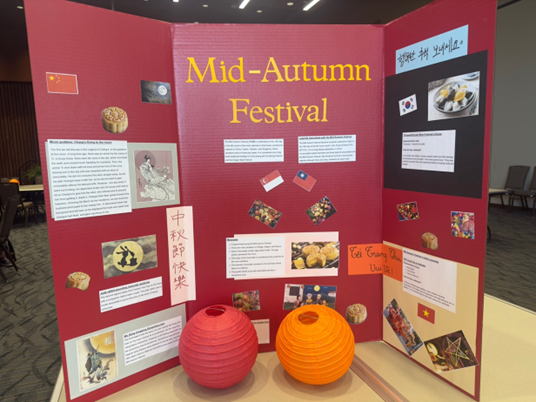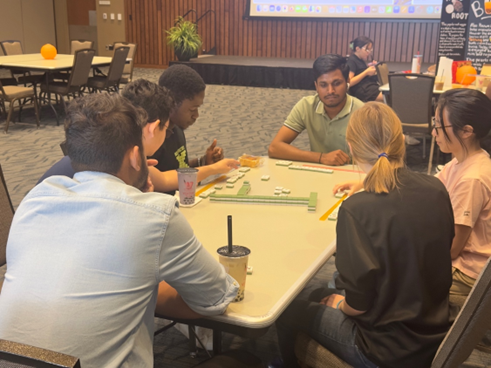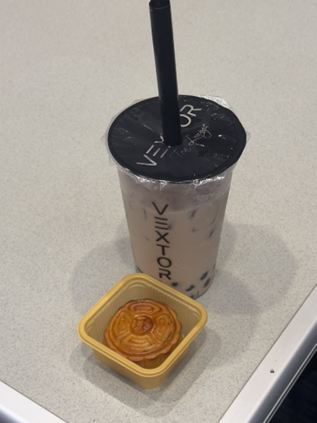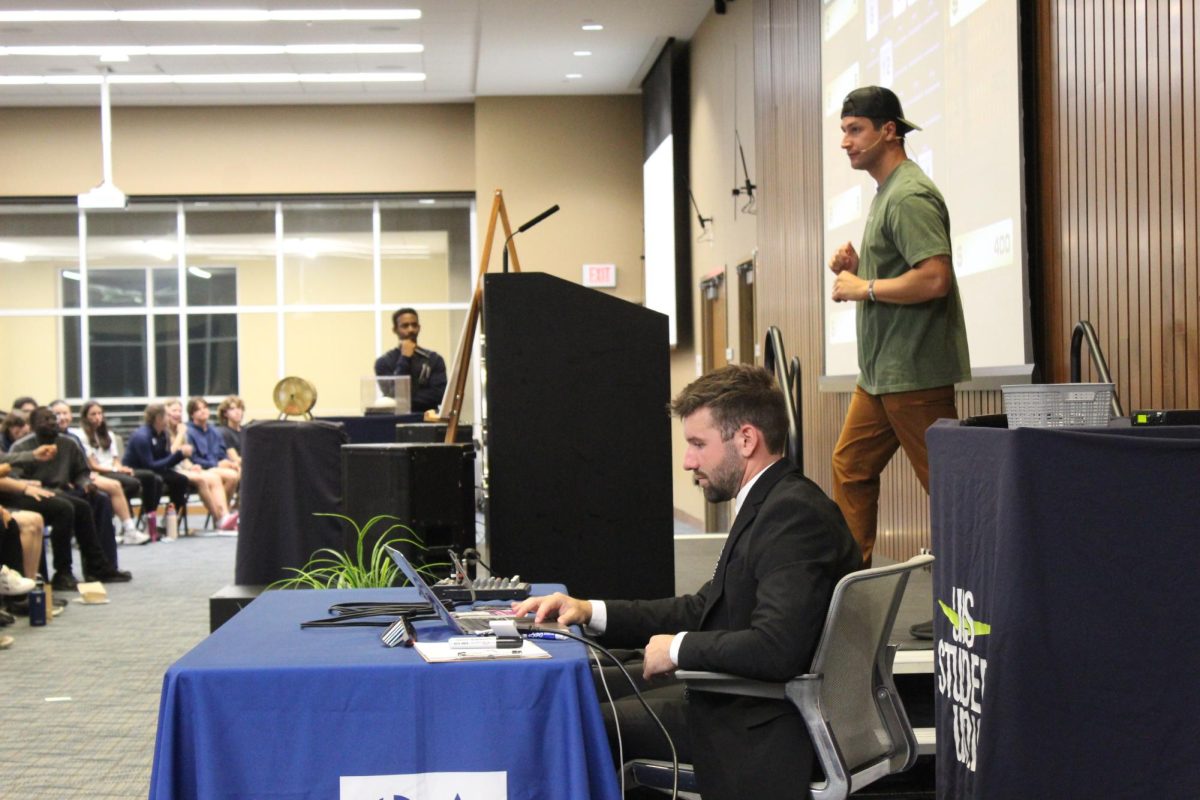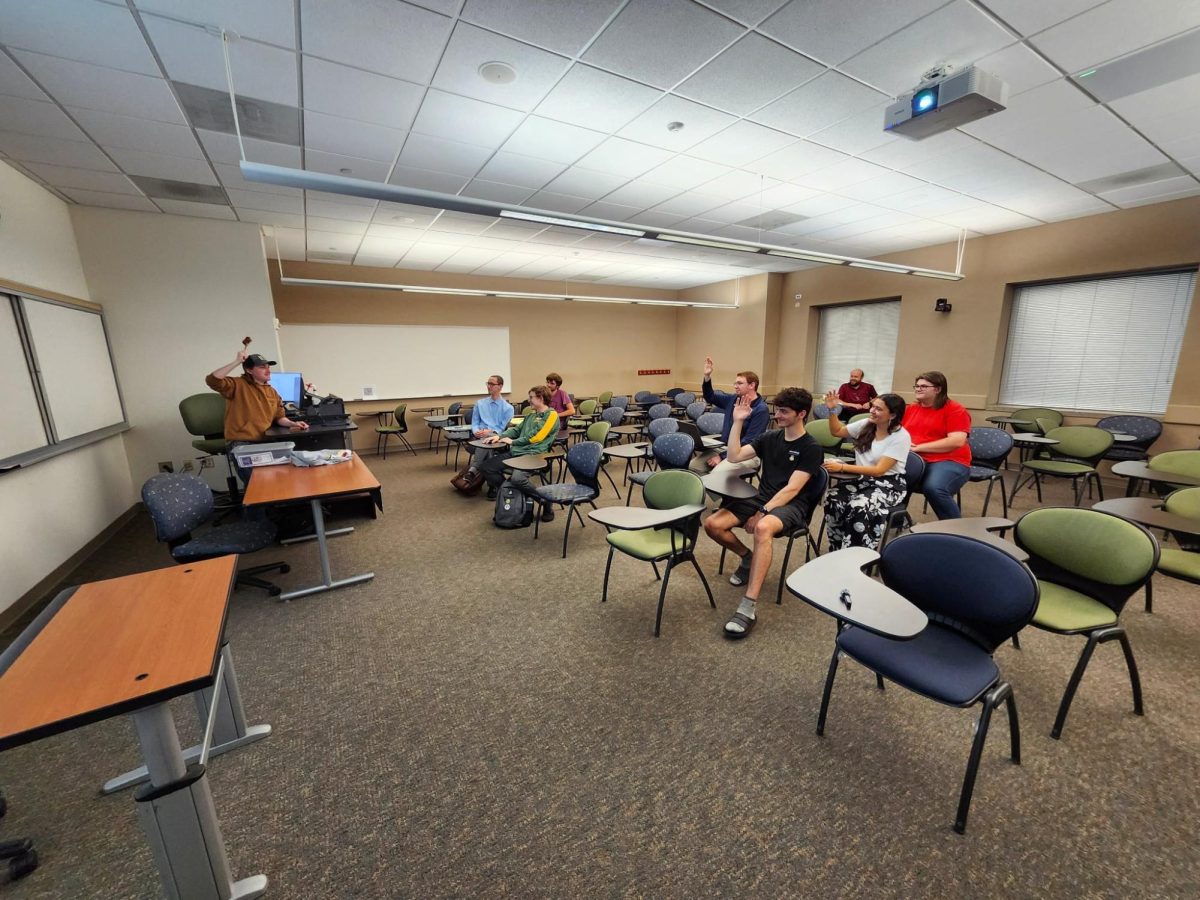The Mid-Autumn Festival, celebrated on the 15th day of the 8th month of the lunar calendar, is a cherished tradition across East Asian countries like China, Vietnam and Singapore. On Friday, September 20, the University of Illinois Springfield’s International Student Services (ISS) hosted its own celebration of this ancient festival, inviting students to the Student Union Ballroom for a night filled with cultural exploration, interactive activities, and an array of traditional Asian foods.
Students and attendees immersed themselves in various customs, from playing Mahjong to learning origami, while indulging in iconic dishes like mooncakes and taro-based desserts. The event offered a comprehensive experience of one of East Asia’s most significant celebrations.
Legends of the Mid-Autumn Festival
Central to the festival are the stories that have been passed down for generations, adding depth and meaning to the occasion. Three of the most well-known legends were shared during the event, sparking interest among attendees.
Chang’e and the Moon Goddess
The legend of Chang’e is one of the most famous tales. According to the story, Chang’e’s husband, Yi, saved the world by shooting down nine scorching suns, earning an elixir of immortality. When a treacherous apprentice tried to steal it, Chang’e drank the elixir herself, ascending to the moon. From there, she became the moon goddess, forever separated from her beloved Yi. Yi, in his grief, honored Chang’e by offering her favorite fruits and cakes during the festival—a tradition still honored today.
The Jade Rabbit
According to another legend, Chang’e is not alone on the moon. She is accompanied by a jade rabbit, who spends eternity pounding the elixir of life with a mortar and pestle. The rabbit has become a symbol of companionship and immortality, often depicted alongside Chang’e in cultural representations.
Wu Gang and the Osmanthus Tree
The third story tells of Wu Gang, a man condemned to chop down an osmanthus tree on the moon for eternity. As punishment, the tree heals itself after every chop, symbolizing endless toil. Interestingly, osmanthus trees bloom in autumn, and their fragrant flowers are used to make a wine often consumed during the festival.
A global celebration
While the Mid-Autumn Festival originated in China, other countries have put their own spin on the holiday. In Korea, it’s known as Chuseok, a three-day harvest festival focused on family and thanksgiving. Special rice cakes called Songpyeon are prepared and enjoyed. In Vietnam, the festival is called Tết Trung Thu and is particularly loved by children. The streets are filled with colorful lanterns, lion dances, and festive mooncakes.
Taste of tradition
At the UIS celebration, attendees had the opportunity to sample traditional foods deeply connected to the festival’s history.
Taro Root
Taro is a starchy root vegetable, beloved in many Asian cuisines. The vegetable is often steamed and served in desserts or beverages, offering a subtle sweetness and a rich, creamy texture.
Boba Tea
Popularized in Taiwan, boba tea—or bubble tea—has become a global phenomenon. Its signature chewy tapioca pearls are made from tapioca starch and brown sugar, creating a delightful contrast to the smooth, sweet tea.
Mooncakes
No Mid-Autumn Festival isn’t complete without mooncakes! These round pastries, filled with lotus seed paste, red bean paste, or salted egg yolk, represent family unity and reunion. The round shape of the mooncake symbolizes the full moon, which is central to the festival’s themes of completeness and harmony. Mooncakes have such cultural significance that they have earned a place in the Guinness World Records for the heaviest mooncake ever made, weighing an astonishing 2,496 kg.
A celebration of culture and unity
This year’s Mid-Autumn Festival at UIS was not only a culinary delight but also an opportunity for students to engage with the values and traditions that define this special holiday. The event highlighted how cultural celebrations like these can transcend borders, offering everyone a chance to experience the richness of diversity.
For the UIS community, it remains a meaningful reminder of the beauty in coming together to appreciate shared humanity through the lens of cultural traditions.

